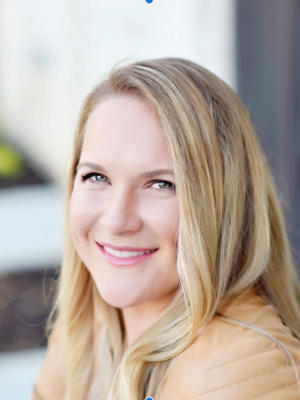 (by Marcy Comer) I’ve spent my career working to get into the C-Suite, because I wanted to have the challenge and opportunities that come from leading a company and being at the top of my discipline. Now in this role, I’m continuing to learn that the secret to making it to, and staying in, the role of CMO is based on learning to pivot.
(by Marcy Comer) I’ve spent my career working to get into the C-Suite, because I wanted to have the challenge and opportunities that come from leading a company and being at the top of my discipline. Now in this role, I’m continuing to learn that the secret to making it to, and staying in, the role of CMO is based on learning to pivot.
I grew up playing basketball, and a pivot is a classic move in which the player stops, holds the ball, and looks around for an opening on the court. You can apply this move in your job and your career. It requires you to stop and evaluate potential next moves. You have to stop the daily grind and evaluate. The more you look around, the more opportunity you find to make the next big move. And, making a big move is the way that you help to accelerate your career and the success of your team.
Here are five ways you can actively bring a pivot-first mentality to your career:
- Embrace the struggle as an opportunity: Most people avoid the pain of having to learn something new. But, when you take on painful work, you’re relieving the pain for your manager, coworkers, etc. Start finding the fun in learning and it will no longer be a pain; and it will make you a valuable asset in the organization. This is a pivot from just doing your job, to becoming someone who does hard jobs or unwanted jobs can be a big step towards career success. I’m not the only one who believes this: in a survey of more than 50,000 learners who completed MOOCs on Coursera, 72% reported career benefits such as doing their current job more effectively, finding a new job, or receiving a raise.
- Be your own futurist: Find out what’s on the horizon from people that are already respected and be that person for your circle; this means staying on top of news, ideas and conversations and learning from leaders in various fields. The only way to see which way to pivot is to be paying attention to the ever changing horizon and landscape around your business. CNBC has listed “futurism” as the number one skill for leaders.
- Don’t just talk about it, try to apply it: Get a trial of a new product, sign up for a course on it and experience the new thing for yourself. Bring it to your organization with your own point of view. Recently I spent a lot of time learning ChatGPT because I wanted to understand how it could impact the marketing function and what it could do to help the aerial imagery business, EagleView, where I work. I was able to apply those learnings to improve business processes, by pivoting to embrace the future, I was able to then lead others within the company on the new tech.
- Get better at your weaknesses: A weakness is only a weakness until you make it a strength. The pivot is in skill but also it is mental: if you believe a weakness can be turned into a strength, you will. Once I was in the final stages for a marketing role I really wanted but I didn’t get it because they said I didn’t have enough B2B experience. So I went out and learned as much as I could about it, started consulting companies as a B2B marketer and turned it into a strength. 77% of organizations report they are currently experiencing a leadership gap. Fewer than 20% of organizations have a bench of capable leaders ready to fill critical roles. You have to improve your areas of weakness to step into leadership roles.
- Don’t believe everything people tell you: People will always try to put you into a bucket, because it is easier for them if you are exactly who and what they think of you as. However, the pivot is to make sure that you don’t believe people who aren’t seeing your pathway to success. Once, I had a terrible manager at Amazon who kept telling me I needed to learn SQL to get ahead. While coding is definitely a weakness that I *could* get better at, what CMOs are writing SQL every day?
There are similarities between these examples and all of them ladder up to mindset. The key to bringing the pivot forward is to be constantly learning, understanding the world around you and then leveraging that knowledge to help those within your team and company. The more you scale and grow yourself, the better you will be able to find roles that interest you and a career with exponential growth opportunities.
Marcy Comer is the CMO of the EagleView Commercial Business, a role she stepped into after leadership roles at Amazon, Sears, 7-Eleven, Dosh, and Spruce. As a leader who has worked across B2B, B2C, B2B2C and D2C, she has developed a perspective for herself and her team on what it takes to succeed. Her unconventional approach is this: focus on the pivot.
(Guest Contribution: The opinions and views of guest contributions are not necessarily those of theglasshammer.com).

